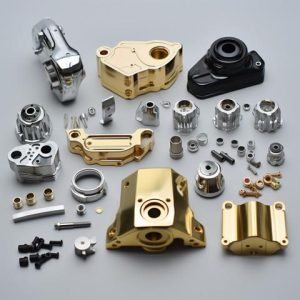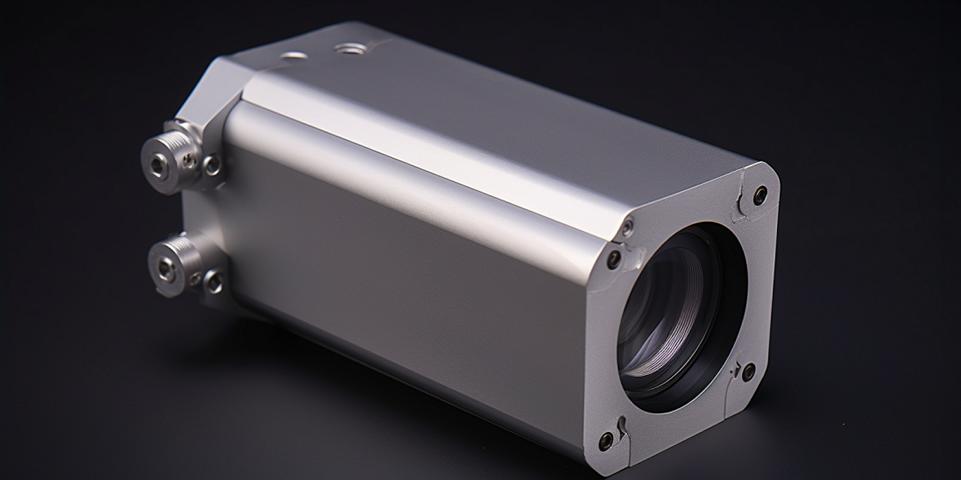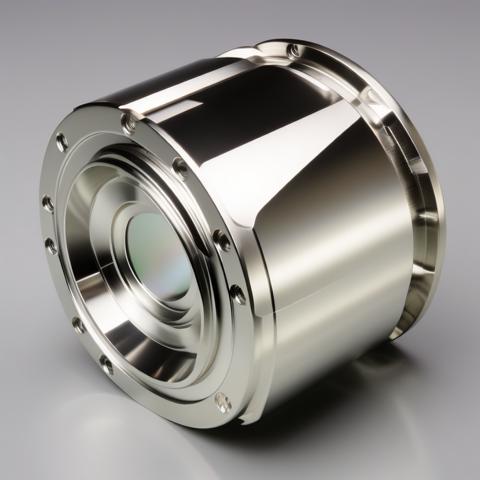What is Aluminium die casting mold
Aluminium die casting mold, also known as aluminum die casting tool or die, is a specialized tool used in the process of aluminum die casting. Die casting is a manufacturing process in which molten metal, in this case, aluminum, is injected into a mold cavity under high pressure. The metal solidifies within the mold to create a precise and often complex shape.
The aluminium die casting mold is a crucial component in this process as it defines the final shape and features of the cast part. The mold typically consists of two halves, known as the die halves or die sections, which are mounted on a machine and closed together during the casting process.
The mold is designed with the negative shape of the desired product. When the molten aluminum is injected into the mold, it fills the cavity and takes the shape of the mold as it solidifies. The mold must be able to withstand the high pressure and temperature of the molten metal and maintain its integrity over multiple casting cycles.
Aluminium die casting molds are typically made from tool steel, which has high hardness and wear resistance. The mold may also incorporate various features such as cooling channels to regulate temperature and extend mold life.
Types of Aluminium Die Casting Molds
There are several types of aluminium die casting molds, each designed for specific applications and production requirements. The main types include:
- Single Cavity Mold:
- In a single cavity mold, only one part is produced in each casting cycle. It is suitable for low-volume production or when each part is relatively large or complex.
- Multiple Cavity Mold:
- Multiple cavity molds have more than one cavity, allowing for the simultaneous production of multiple parts in each casting cycle. This type is ideal for high-volume production, reducing cycle times, and improving efficiency.
- Unit Die Mold:
- Unit die molds are designed with interchangeable units, each containing a single cavity. This design allows for flexibility in changing specific cavities without replacing the entire mold. It is useful for producing different parts with the same die casting machine.
- Family Mold:
- Family molds are a type of multiple cavity mold that produces different parts simultaneously in a single casting cycle. The parts are typically related or complementary in function, allowing for efficient production of assemblies or related components.
- Prototype Mold:
- Prototype molds are used in the early stages of product development to create a small number of parts for testing and validation. These molds are often less expensive and have a shorter lifespan compared to production molds.
- Cold Chamber Die Casting Mold:
- In cold chamber die casting, the molten metal is ladled into the shot chamber, and a piston injects it into the aluminum die casting mold. The mold used in this process must be able to withstand the high pressure and temperature of the molten metal.
- Hot Chamber Die Casting Mold:
- Hot chamber die casting utilizes a gooseneck system to feed molten metal directly into the die. This process is suitable for metals with lower melting points like zinc and magnesium. The mold used in hot chamber die casting is designed to withstand the heat without the need for an external furnace.
- Trim Die:
- Trim dies are used to remove excess material or flash from the die-cast part after it has been ejected from the mold. These dies are important for achieving the final, precise dimensions of the part.
The selection of the type of aluminium die casting mold depends on factors such as production volume, part complexity, material properties, and cost considerations. Manufacturers choose the most suitable mold type based on their specific production requirements.

Design Considerations for Aluminium Die Casting Mold
Designing an aluminium die casting mold is a critical aspect of the die casting process, and several considerations need to be taken into account to ensure the production of high-quality parts. Here are some key design considerations for aluminum die casting molds:
- Part Geometry:
- The mold design must accommodate the desired part geometry, including any intricate features, undercuts, or thin sections. A thorough understanding of the part’s design is crucial to creating a mold that can replicate it accurately.
- Draft Angles:
- Draft angles are essential to facilitate easy ejection of the casting from the mold. Including appropriate draft angles helps prevent sticking and reduces the likelihood of damaging the part or the mold during ejection.
- Wall Thickness:
- Uniform wall thickness helps ensure consistent cooling and solidification rates, minimizing the risk of defects such as porosity and shrinkage. Designing for optimal wall thickness is crucial for achieving the desired mechanical properties of the cast part.
- Fillets and Radii:
- Incorporating fillets and radii in the mold design helps distribute stress more evenly during the casting process, reducing the likelihood of cracks or other defects. Smooth transitions between features also aid in the flow of molten metal.
- Runner and Gate Design:
- Efficient runner and gate designs are crucial for controlling the flow of molten metal into the mold cavity. Proper gate placement, size, and geometry influence the filling pattern, solidification, and part quality. Common gate types include edge gates, sprue gates, and pin gates.
- Ejector Pin Placement:
- Ejector pins are used to push the solidified casting out of the mold cavity. Proper placement of ejector pins is essential to avoid damage to the part and ensure uniform ejection.
- Cooling Channels:
- Incorporating cooling channels into the mold design helps regulate the temperature during the casting process. Optimized cooling can enhance cycle times, reduce thermal stresses, and improve overall part quality.
- Material Selection:
- The mold material must be chosen based on factors such as thermal conductivity, wear resistance, and toughness. Common mold materials include tool steel and, in some cases, beryllium-copper alloys.
- Surface Finish:
- The surface finish of the mold affects the final appearance of the cast part. A smooth mold surface reduces the likelihood of defects on the part and enhances the overall aesthetic quality.
- Tolerances and Dimensional Accuracy:
- Design the aluminium die casting mold with tight tolerances and consider the expected shrinkage of the aluminum during solidification. This ensures that the final part meets the specified dimensional requirements.
- Venting:
- Adequate venting is crucial to allow gases to escape during the casting process. Poor venting can lead to trapped air, porosity, or other defects in the cast part.
By carefully addressing these design considerations, manufacturers can create aluminium die casting molds that promote efficient production, reduce defects, and ensure the production of high-quality aluminum castings.
Manufacturing Process of Aluminium Die Casting Mold
The manufacturing process of an aluminium die casting mold involves several steps to create a precise and durable tool for producing aluminum castings. Here is an overview of the typical manufacturing process for an aluminum die casting mold:
- Design and Engineering:
- The process starts with the design of the aluminium die casting mold based on the specifications of the desired aluminum casting. Engineers use CAD (Computer-Aided Design) software to create detailed 3D models, incorporating considerations for part geometry, draft angles, cooling channels, gating, and other features.
- Material Selection:
- The choice of aluminium die casting mold material is crucial. Tool steels, such as H13 or 8407, are commonly used due to their high hardness, wear resistance, and ability to withstand the harsh conditions of the die casting process.
- Block Preparation:
- The selected aluminium die casting mold material is typically in the form of a large block or billet. The block is prepped by cutting, milling, or rough machining to approximate the overall shape of the mold.
- Rough Machining:
- The rough machining phase involves removing excess material from the block, bringing it closer to the final shape of the mold. This is typically done using milling machines, CNC (Computer Numerical Control) machining, or other precision machining tools.
- Heat Treatment:
- The rough-machined aluminium die casting mold undergoes heat treatment to achieve the desired hardness and improve its mechanical properties. This process helps ensure the mold can withstand the high temperatures and pressures of the die casting process.
- Finish Machining:
- After heat treatment, the aluminium die casting mold undergoes finish machining to achieve the precise dimensions and surface finish required for the final part. This step involves using precision machining tools and techniques to achieve tight tolerances and smooth surfaces.
- EDM (Electrical Discharge Machining):
- EDM is often employed to create intricate features, cavities, or fine details in the mold that may be challenging to achieve with traditional machining methods. EDM uses electrical discharges to shape the mold according to the CAD design.
- Polishing:
- The mold surfaces are polished to achieve a smooth finish, which helps in releasing the cast parts more easily and improves the overall aesthetics of the finished product.
- Assembly:
- If the aluminium die casting mold consists of multiple parts or has moving components, assembly is performed. This involves fitting together the different mold sections and ensuring proper alignment and functionality.
- Quality Control:
- The completed aluminium die casting mold undergoes thorough quality control checks to verify its dimensional accuracy, surface finish, and overall quality. Inspection may include the use of measurement tools, visual inspection, and other testing methods.
- Final Inspection and Testing:
- The final aluminium die casting mold undergoes a comprehensive inspection to ensure it meets all specifications. Testing may include trial runs with molten metal to verify the mold’s functionality and the production of sample castings.
Once the aluminium die casting mold passes all quality checks, it is ready for use in the aluminum die casting process. The precision and quality of the mold play a significant role in the efficiency and consistency of the die casting production.
Future Outlook for Aluminium Die Casting Mold
The potential future developments in the aluminium die casting mold industry will be as follow.
- Digitalization and Industry 4.0:
- The integration of digital technologies, such as IoT (Internet of Things), artificial intelligence, and data analytics, is likely to play a significant role in the future of aluminum die casting mold manufacturing. Smart molds with embedded sensors can provide real-time data on operating conditions, enabling predictive maintenance and improving overall efficiency.
- Additive Manufacturing (3D Printing):
- Additive manufacturing, particularly metal 3D printing, has the potential to revolutionize mold manufacturing. This technology allows for the production of complex geometries and conformal cooling channels, which can enhance mold performance and reduce cycle times. As 3D printing technology advances, it may become more prevalent in the production of aluminum die casting molds.
- Advanced Materials:
- Continued research and development in materials science may lead to the use of advanced materials for die casting molds. This includes materials with improved heat resistance, wear resistance, and longevity, contributing to enhanced performance and durability of the molds.
- Optimization of Cooling Systems:
- Efforts to optimize mold cooling systems will likely continue to improve. Enhanced cooling techniques, such as conformal cooling, can result in more uniform temperature distribution within the mold, reducing cycle times and minimizing thermal stress on the mold.
- Lightweighting and Sustainable Practices:
- The emphasis on lightweighting in automotive and other industries may drive the development of aluminum die casting molds that support the production of lightweight components. Additionally, there could be an increased focus on sustainable practices in mold manufacturing, including the use of eco-friendly materials and energy-efficient processes.
- Automation and Robotics:
- The integration of automation and robotics in die casting operations is expected to increase. Automated systems for mold loading and unloading, as well as robotic systems for part inspection and quality control, can improve efficiency and reduce labor costs.
- Global Market Expansion:
- The demand for aluminum die casting molds may grow in emerging markets as industries in these regions expand. The globalization of manufacturing and increased demand for lightweight and durable components in various sectors could drive the market for aluminum die casting molds.
- Collaboration and Supply Chain Integration:
- Collaborative efforts among mold manufacturers, die casters, and end-users may increase to optimize the entire supply chain. Closer collaboration can lead to more customized and efficient solutions, addressing specific needs in different industries.
- Regulatory Compliance and Quality Standards:
- Adherence to international quality standards and regulatory compliance is likely to remain a key focus. Molders and manufacturers will continue to prioritize quality control measures to meet the stringent requirements of various industries.
It’s essential to stay updated with the latest industry news and technological advancements to gain insights into the future outlook of aluminum die casting mold manufacturing. Additionally, market dynamics and trends can be influenced by factors such as economic conditions, industry shifts, and technological breakthroughs.
Welcome to GC Precision Mould, your premier China die casting manufacturer and China Mold Maker. We specialize in producing high-quality plastic molds, die casting molds, and a wide range of die cast parts from materials such as aluminum, zinc, and magnesium.
At GC Precision Mould, we are dedicated to providing our clients with the best possible aluminum die casting and other casting products and services. Our team of experienced engineers and technicians use the latest technology and techniques to ensure that every part we produce meets the highest standards of quality and accuracy.
Our products are widely used in a variety of industries, including automotive, consumer electronics, medical, and industrial equipment. We work closely with our clients to understand their specific needs and develop custom solutions that meet their unique requirements.
Whether you need a single plastic mold or a complete die casting production line, we have the expertise and resources to deliver exceptional results. Contact us today to learn more about our services and how we can help you achieve your manufacturing goals.
If you have a project that needs Die casting China for your die casting project or mould suppliers to make injection molding products, contact us to get the best price now.
